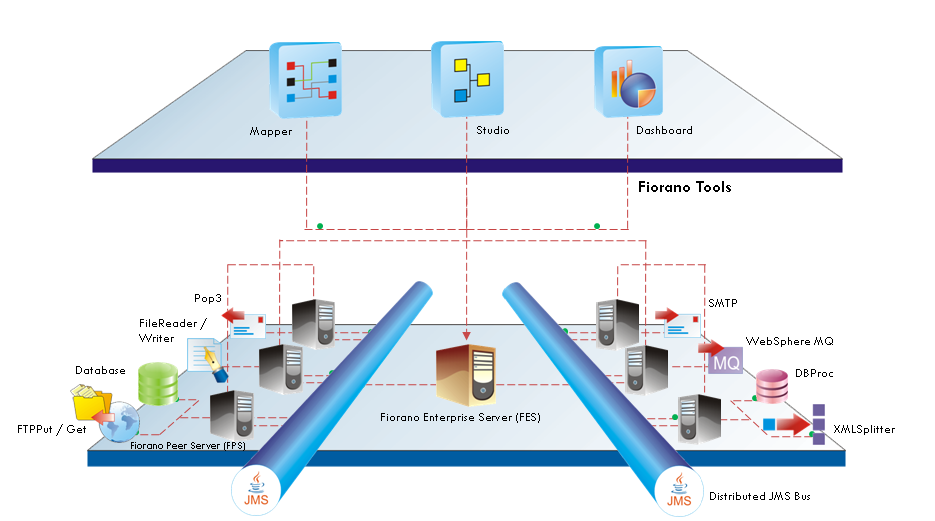This section explains the high-level system architecture of the Fiorano Enterprise Services Grid, which consists of Peer Service Containers installed across the network together with the centralized Management and Repository Server as well as Management tools.
Fiorano System Architecture
The Fiorano Platform include the:
- Fiorano Peer Server Network
- Fiorano Enterprise Server
- Fiorano Service Components
- Fiorano Tools Interface
Figure 1 illustrates how different entities of the platform interact with each other in carrying out their respective functionalities.

Figure 1: The Fiorano System Architecture
- The Fiorano Peer Server Network is the Enterprise Class, centrally managed Peer-to-Peer messaging backbone.
- The Fiorano ESB Server is the Administration Gateway to the ESB Peer Server network.
- The Fiorano Service components are either the interfaces to units of the Enterprise IT Infrastructure or implementations of commonly used integration elements (such as transformations, content based routers, and so on). The Fiorano Service components implemented mostly in Java are either pure JMS or JCA components. Custom service components can be built in Java, C#, C or C++.
- The Fiorano Tools Interface is provided via the Fiorano eStudio which offers intuitive visual interfaces for the implementation of ESB rver capabilities for end Users.
ESB Server to Peer Server communication
All data communication at runtime in the ESB network happens in direct Peer to Peer fashion among Peer Servers. Only control data flows between the Enterprise and the Peers. The types of control events handed by the ESB Server include service component state notifications, event process state notifications, HA events, document tracking events and so on.